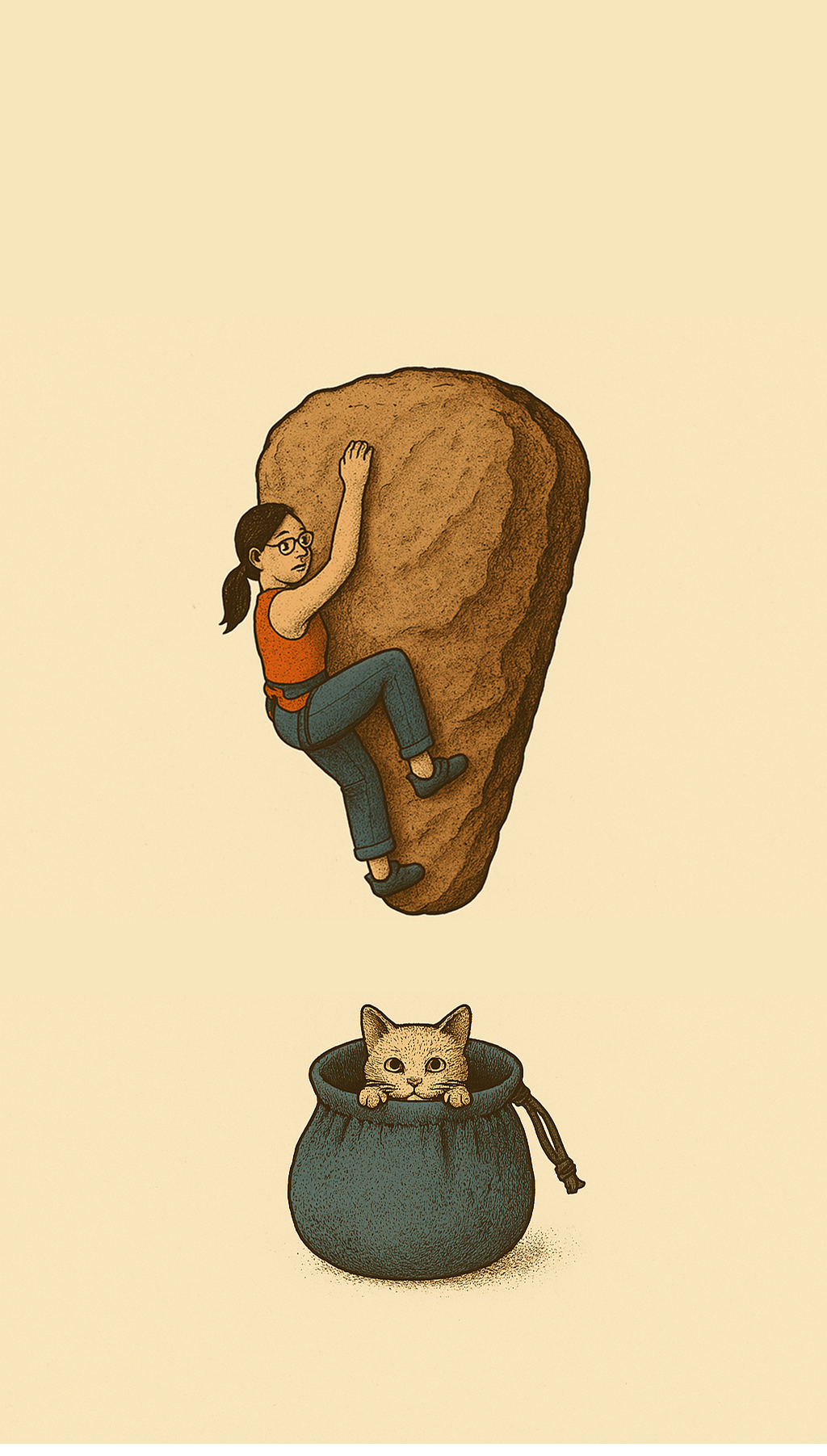Tracing Terrain on TV: Foot-Eye Micro-Coordination for Climbers
Drill: “Tracing the Terrain — Micro-Movement Mapping with Climbing Vision”
Purpose
To cultivate precise visual-spatial attention, whole-body coordination, and core-integrated movement through a subtle, playful interaction between body and environment—anchored in the emotional and sensory richness of watching your favorite climbing competition or climber.
Setup
Find a comfortable seated or reclined position—bed, couch, or floor with support.
Have a laptop, tablet, or phone with a trackpad or touch surface accessible.
Queue up your favorite climbing competition, livestream, or climbing YouTuber video.
Instructions
Ground Your Attention
Close your eyes briefly. Take three slow, intentional breaths, sensing your body’s contact points with your support. Soften into your core and pelvis.Open Your Eyes and Engage
Look at your screen, tuning in to the climbers moving through the route. Choose a terrain feature that catches your eye—a hold edge, a volume, a line of the wall, or a shadow on the route.Trace with Your Toe
Place your toe gently on the trackpad. Begin to trace the selected terrain feature or visual edge with slow, deliberate movements, following its shape or angle.Coordinate Whole-Body Attention
As you trace:
Keep your gaze soft but precise on the chosen terrain detail.
Feel your hands resting naturally, relaxed or lightly touching your legs or belly.
Engage a gentle core lift—a subtle zipping up of your belly—without holding your breath.
Maintain a long, fluid spine.
Add Perceptual Complexity
While tracing, allow your peripheral vision to absorb the climbers’ movements, body language, and flow. Notice the rhythm and energy without shifting your focal gaze.Shift Vectors
After several rounds on one feature, shift your attention to a new vector—vertical, diagonal, or horizontal edges on the wall or climbers’ bodies. Experiment tracing these new angles.Micro-Reflect
Pause and notice:
How did combining toe tracing, gaze, and core feel?
Did the peripheral movement of climbers enrich or distract your focus?
Where did you feel subtle tension, ease, or curiosity?
Coaching Tips
Move slowly and curiously—this drill is about presence and sensation, not speed or perfect accuracy.
Avoid gripping or bracing; let sensation guide your movement.
Celebrate even the smallest shifts—they build the sensory foundation for complex climbing skill.
Outcome
This drill trains your nervous system to:
Harmonize fine motor control with visual spatial accuracy
Maintain core engagement during multi-limb coordination
Develop perceptual filtering—balancing focused attention with environmental awareness
Transform the passive act of watching climbing into active perceptual training
